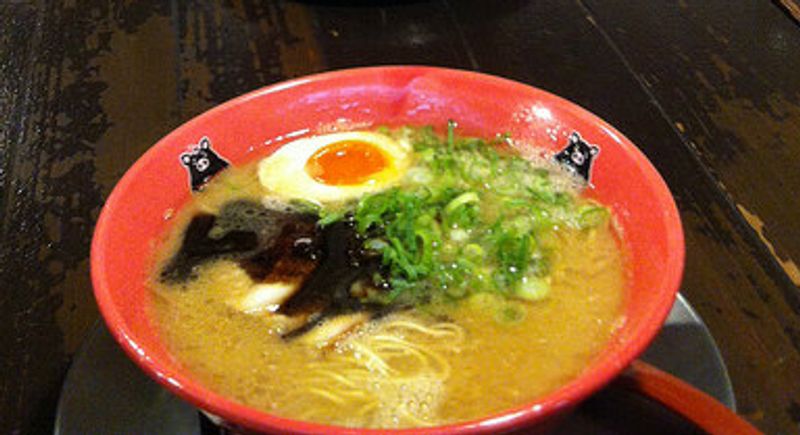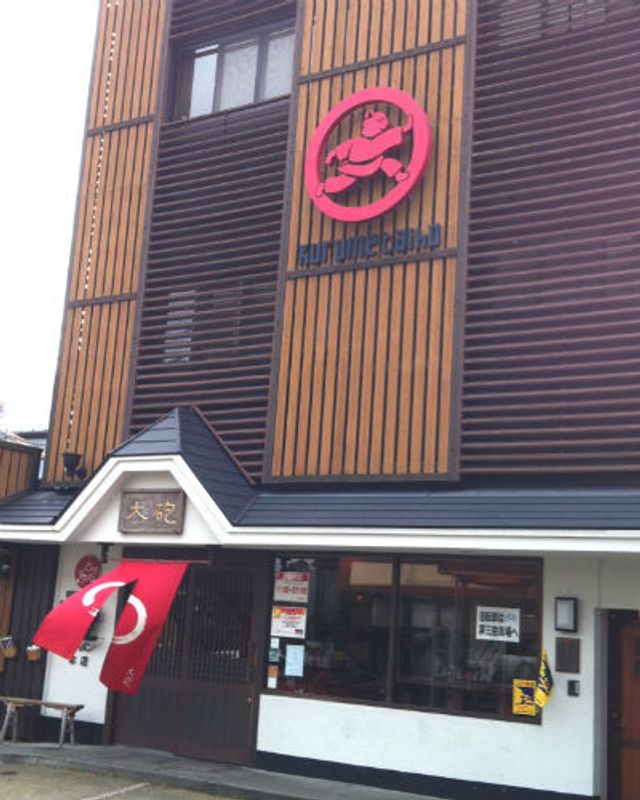Dec 7, 2017
Hakata Ramen: Fukuoka Foods
Kyushu Japan, Fukuoka Prefecture, Fukuoka City (Hakata) and Kurume City.

Fukuoka's local foods include mentaiko, motsu nabe, and 'Hakata Ramen' (which is essentially tonkotsu ramen).
If you take a stroll anywhere in Fukuoka Prefecture, you're bound to smell a strong tonkotsu aroma when you pass a ramen restaurant or yatai (the famous food carts in the area).
When I get asked what Japanese foods I like, my honest answer is tsukemen (つけ麺) or 'dipping ramen.' To please the locals, now I adjust my answer to ‘tonkotsu ramen’ (豚骨ラーメン) which is also really nice.
I asked some of my students where to get the best ramen in town, and I heard Taiho Ramen, (the original location or honten), was the place to go. Before even asking, I had a suspicion, as I had seen Taiho Ramen featured in a Japanese drama based on true stories that took place in Fukuoka Prefecture (福岡恋愛白書).
Tonkotsu / Hakata Ramen uses a milky white pork bone broth (originating at Taiho Ramen in Kurume City). Tonkotsu literally means 'pig bone.' The collagen in pork bones is said to benefit joints as well as the digestive and immune systems. It is made by boiling the bones for over eight hours to create the tasty broth.
Another difference is that the noodles are on the thin side, compared with ramen you might eat in Tokyo. It is often served with slices of pork belly, char sui pork, and miso tamago (miso seasoned boiled eggs). Other toppings like pickled bamboo shoots, bean sprouts, green onions and nori, plus spicy or garlicy oil, togarashi pepper, and pickled ginger are popular for Hakata Ramen.
For around 1000 yen, you can get a big bowl of Hakata Ramen, plus kaedama (変玉 refill noodles).

Mentaiko is cod roe, usually spiced. It can be found just about anywhere in Japan, but for some reason, this is one of Fukuoka Prefecture's famous foods. You may have had mentaiko in onigiri or combined into a creamy pasta sauce.
Another way you can see mentaiko, specifically in Hakata (Fukuoka) is as a spicy senbei. The name of this local food is cleverly shortened to 'menbei.' Menbei is a super popular gift as a box of the individually wrapped rice crackers is affordable and light.
Nabemono (food boiled in a pot, or nabe) is a popular winter food all over Japan, but in Fukuoka Prefecture, the Hakata style of nabe is motsunabe with 'hormone' meaning the 'offal,' or leftover parts of meat. Usually this is beef or pork tripe, including organs like the heart or liver as well. This makes for some potentially chewy meat, but there can be some tender meat included.
Usually motsunabe also contains cabbage and nira as well as other seasonally available veggies. It is considered to be a low fat dish, but is often eaten along with other dishes and drinks. It's also popular because of high protein and collagen content.
The soup base is usually a garlic shoyu or miso flavor with chili peppers. There are other broth flavors, the same as every nabe ryori, for example salt or yuzu. Some people add chanpon noodles to the broth when there is room in the pot after eating some of the veggies and meat.
This is the soul food of Hakata, so it can be found in just about every izakaya and restaurant during the cold season. Some people love to eat it during the summer. You might even find motsunabe with mentaiko!
If you’re in Kyushu, you can usually get tonkotsu ramen, although chanpon might be more popular in Nagasaki Prefecture. Of course a lot of regional Japanese foods are available in other parts of Japan, especially in Tokyo at the 'satellite shops.'
(There is a Fukuoka Prefecture, Kurume City satellite shop in Tokyo now: Shinbashi 2-19-4 NT Building. Has anyone been there?)



0 Comments